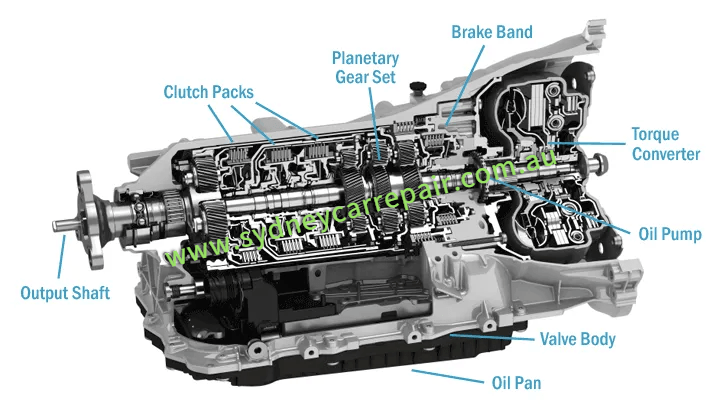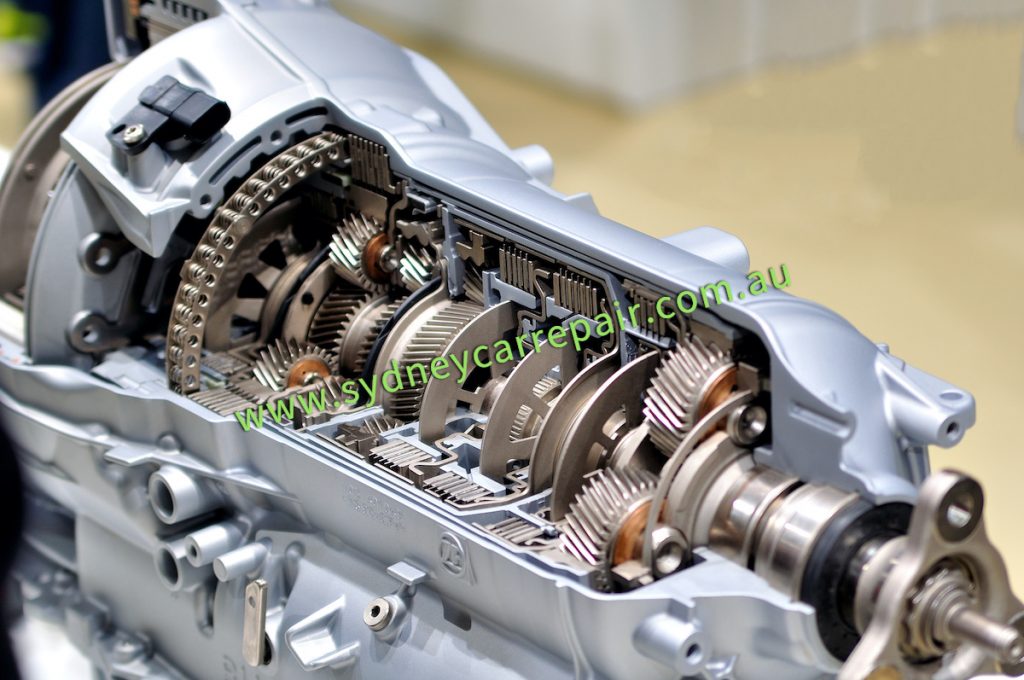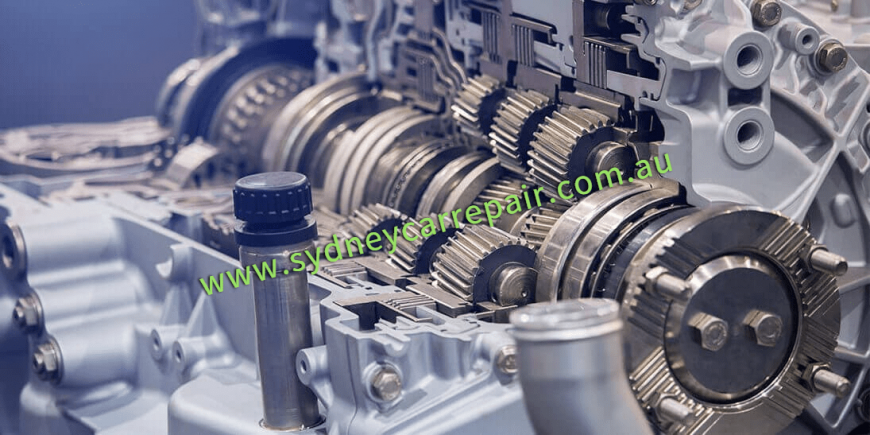https://youtu.be/al08aGQTkFk
What is a Transmission?
For all transmissions, the basic premise is to give control over torque and power that’s transmitted to the drive wheels.
Different gear ratios let you control the speed and engine RPMs for smoother operation.
The principle is similar to the gears on a bike. Lower gears mean that more power is produced. Higher gears allow you to drive at a higher speed.
There are three types of transmissions in a car—manual, automatic, and CVT. Manual models have you change the gears yourself. Automatic models use the vehicle to do the shifting for you. CVT transmissions are a type of automatic with essentially one long gear.
There are internal clutches and gears still, but in a much more complex design.
Next to the engine, the transmission is the most complex component in your car – especially an automatic transmission.
One seemingly small problem will cause a devastating effect inside, and you could find yourself stranded with an immovable car.

What are Signs Blown Transmission?
How do you know when your transmission is about to fail you or already blown? These six signs of a bad transmission will help you determine if your transmission is toast.
Strange Noises
If you hear clunking, grinding, or whining sounds every time you shift gears, visit a mechanic for car repairs right away. These are all signs your transmission is going. This problem could be caused by a number of issues, ranging from insufficient transmission fluid to damaged or worn-down gears. Identifying the type of sound and at which point of the shifting process it happens will help your mechanic figure out the problem.
Strange Smells
It is time to start thinking about your next fluid change once you start to detect a light, burning odor. Transmission fluid will typically smell sweet or tart. Transmission fluid keeps all the transmission parts lubricated. It also prevents it from burning itself up. If your transmission fluid is burnt, your transmission could be burning, too. If that’s the case, you could need a complete transmission rebuild.
Shifting Issues
Difficulty shifting or a gear slips are clear signs of transmission problems. With a manual transmission, this is usually caused by a worn clutch. In automatic vehicles, low fluid levels, worn-down gears, broken transmission bands, or problems with the solenoid or torque converter, could cause it.
Slippage
Slippage is when your vehicle behaves like its on ice or snow, but you are on dry pavement. You push down on the car and you don’t go anywhere. Your motor is revving but your car isn’t responding. Slippage affects your transmission’s ability to propel the car forward. Ignoring this issue will lead to your car not moving at all.
Overheating
Around 90% of all automatic transmission failures are caused by overheating. While driving, the metal parts of your transmission system are in constant contact with each other. This causes friction that turns into excessive heat when there’s not enough fluid for lubrication. When the component overheats, it produces an unmistakably burnt smell and can lead to a blown transmission if you don’t refill the fluid immediately.
Extreme Heat from Inside Your Car
It is possible to feel your transmission overheating from the inside of your car. If you have a rear wheel drive car, you can feel the heat coming into the passenger compartment through the bottom of the car. This is because the transmission transfers power and heat along the length of the vehicle, to get the power to the rear wheels. If the transmission overheats in front wheel drive cars, you will probably feel this heat between the driver and passenger seats in the gearshift housing.
It’s better to have your transmission checked than to have it leave you stranded on the side of the road. The experienced technicians at Sydney Car Repair can diagnose the root of your problem and recommend the best solution to get you back on the road. Schedule an appointment today and trust one of your vehicle’s most important components to us.
How Long Should a Transmission Last?
With so many moving parts inside, it’s always possible that something can go wrong.
Often, it’s preventable with routine maintenance – a transmission fluid service according to your owner’s manual.
Properly maintained, a transmission often outlasts the rest of your car.
It’s common for transmissions to last beyond 200,000km, and some reports have transmissions lasting beyond 500,000km!
Can You Drive with a Bad Transmission?
A vehicle with a slipping transmission should not be driven for many reasons including the safety concerns. When there are signs of a transmission going out, it could spontaneously shift into different gears causing a harsh kick that could lunge your car forward into another vehicle causing an accident. These harsh kicks can also damage your engine mounts and if left unattended, the end result could be an inoperable transmission. This is bad news because a new transmission cost can be extremely high.

What is the Transmission Repair Cost?
A transmission rebuild is a service that can be done by specialised mechanics with costs starting around $1,200.
However, if there are components inside the case that are damaged badly and need to be replaced, it isn’t always cost effective to perform a rebuild.
Transmission replacement cost depends on your make and model, and ranges from $2,500 to $3,500, and sometimes more!
The Difference between Transmission Repair, Replacement, and rebuild
Transmission Repair
A transmission repair is a cost-effective way to fix faults within a transmission. Transmission repair is ideal for minor fixes. This type of repair can include fixing specific components, in-car repairs, various adjustments, and resealing jobs. Transmission repairs do not require the transmission to be rebuilt completely. This type of repair is not an option for transmissions with extensive damages.
Transmission Replacement
Transmission replacement is costly but is an excellent option for transmissions that sustain extreme damage. During this replacement, the damaged transmission is removed and a new, rebuilt, or remanufactured transmission is set in its place.
Transmission Rebuild
A transmission rebuild is the best option for transmissions that have parts that can be salvaged. During the rebuild process, the transmission is detached and the faulty parts are replaced. The transmission is reassembled and reattached to the vehicle.
Is It Cheaper To Rebuild Or Replace A Transmission?
A transmission replacement is the most expensive option when fixing your transmission. In many cases, you will hear this referred to as “re-manufactured.” Basically, the manufacturer will replace parts that have gone bad with modified parts. This is an option if the transmission is too damaged to even consider a rebuild.
Is It Worth Fixing My Transmission?
The first step in determining if a car repair is worth it is to assess the damage and see it’s gonna cost you more to fix the car than to sell it. Here’s what we recommend
Have a professional transmission mechanic diagnose and quote your damage
Evaluate what your vehicle is currently worth
Fix it or Sell it
Have a professional diagnose and quote your damage: If your vehicle isn’t completely destroyed and the engine is still running well then it might worth your while to fix the car. Visit any local repair shop to have your repair estimate made. Rebuilt transmissions might not be as good as a new transmission, but they’ll keep your car running.
Evaluate what your vehicle is currently worth: Find out what your vehicle is worth. If the cost of repair exceeds your vehicle’s value, then it may not be worth the time and money. SydneyCarRepair is a great place to start. We will make offers on most makes and models in just minutes!
Fix it or sell it: Once you have the repair estimate and the vehicle’s value, then you’re ready to determine if the transmission is worth repairing or not.
How to Replace an FWD Automatic Transmission?
There are a few steps following which you can replace an FWD automatic transmission. Of course, you can take it to the professionals to treat your vehicle. But, being a vehicle owner, you, too need to know the exact process of replacing an FWD automatic transmission.
Here’s how to replace an FWD automatic transmission:
- Loosen Front Axle Nuts
The process starts with loosening both the front axle nuts. You can use a spindle nut & breaker bar to do so. Don’t remove the axle nuts, just loosen it up. Besides this, also loosen the front wheel lug nuts. You might even have to place a drain pan beneath the transmission. The purpose is to drain the fluid as per what’s mentioned for your car.
- Remove the Battery
The battery and the air intake system might block your access, remove it. Disconnect the battery, no matter if you still have the space around it. So, the second step is to remove the battery of your vehicle.
- Lift the Vehicle
The next step is to block the rear wheel and lift the vehicle using the jack. Now, put the jack stands beneath the frame behind the front wheels—lower the car on the stands. Now remove the wheels and axle nuts. Position the jack under the transmission for support before getting the tie-down strap ready to work.
- Remove Starter Bolts
Support both transmission and engine, remove starter bolts, and even transmission-to-engine bolts. Use a universal joint socket for reaching these bolts.
- Disconnect the Transmission
Now, you will need to disconnect the transmission cooler lines. Let them drain into a container before you remove the dipstick, shifter cable, and other electrical wires that are connected to the transmission.
- Remove the Axles
This step includes removing front axles, lower bell housing cover plate, torque converter bolts using a screwdriver. It is better to measure the depth of the torque converter residing inside the transmission housing. You might need this later to put things back.
- Secure the Tie-Down Strap
Now, the step is to secure the tie-down strap around the transmission. Now, remove transmission and engine mounts besides mounting bolts. Disconnect the transmission from the engine.
- Focus on New Transmission
Now, you will need to shift your focus to the new transmission. Place the new torque converter aptly. Keep it turning while pushing to fit into the place. Now check the depth measurements you took earlier and set the transmission in the first go. Make sure you seat it properly, once you have done it, compare the old and the new transmissions.
- Raise the Replacement Transmission
The next step is to raise the replacement transmission into its place aptly. While aligning the transmission to the engine, make sure to have an alignment pin that helps in providing the first point of contact before installing the transmission-to-engine bolts. Refer your repair manual to torque all bolts.
- Reinstall the Torque Converter Bolts
Now follow the converse steps from disassembly. All bolts and nuts will be and torqued aptly. There should be no loose nuts and bolts. This is another step to follow when you want to know how to replace an FWD automatic transmission.
- Install the Axle Nuts
This step will involve installing the axle nuts. Hang the tires and run the lug nuts down. Remember, there should be a stable contact with the wheels. Now, elevate the vehicle back off the jack stands. Torque the axle and lower down the jack to remove it off altogether.
- Fill the Transmission with Fluid
When you want to know how to replace FWD automatic transmission, it is best to pick the high quality fluid for your vehicle. Choose the best quality of transmission fluid to fill the transmission. To know which fluid is best for your vehicle, you will have to refer to your vehicle’s manual. So, when you fill the transmission, begin by starting the engine and letting the transmission warms up. Shift the gears and let it shift into every gear to check things are working normally. Verify the fluid level and avoid overfilling the transmission. The leaked fluid can cause damage.
https://youtu.be/EBuQNkJcKhA
Looking for Car Repair and Car Inspection in Sydney? Give us (Sydney Car Repair) a call today to get FREE QUOTE.
Sydney Mechanic & Smash Repair
All of our car servicing and car repair jobs are carried out by licenced vehicle technicians with years of extensive experience across all popular and luxury makes and models.
Our Address: 71 Atkins Road, Ermington, NSW 2115

Turn on Your Camera and Scan Me to add our contact detail to your phone.
If you are live in Eastwood, Carlingford, Ermington, Auburn , Burwood, Macquarie Park, Parramatta, Chatswood and you need to have your car service and repair near me, car maintenance near me, car mechanic near me you are welcome to visit our car mechanic shop to get it done. We do car servicing and car repair job for people for the Eastwood, Carlingford, Epping, Ryde, Ermington, Auburn, Burwood, Macquarie Park, Parramatta, Chatswood and all the rest of Sydney, Australia. Mechanic near me car, repair near me, vehicle repair near me. Tyre repair near me, tyre replacement near me.
If you need mechanic near me or car repair or used car inspection near me, we can repair most of the following car’s and repair for you in sydney: TOYOTA, HONDA, Mazda, BMW, BENZ, MINI, NISSAN, Mitsubishi, Subaru, Audi, Volkswagen, Hyundai, Ford, Holden, JEEP, Kia, Tesla and many more。


